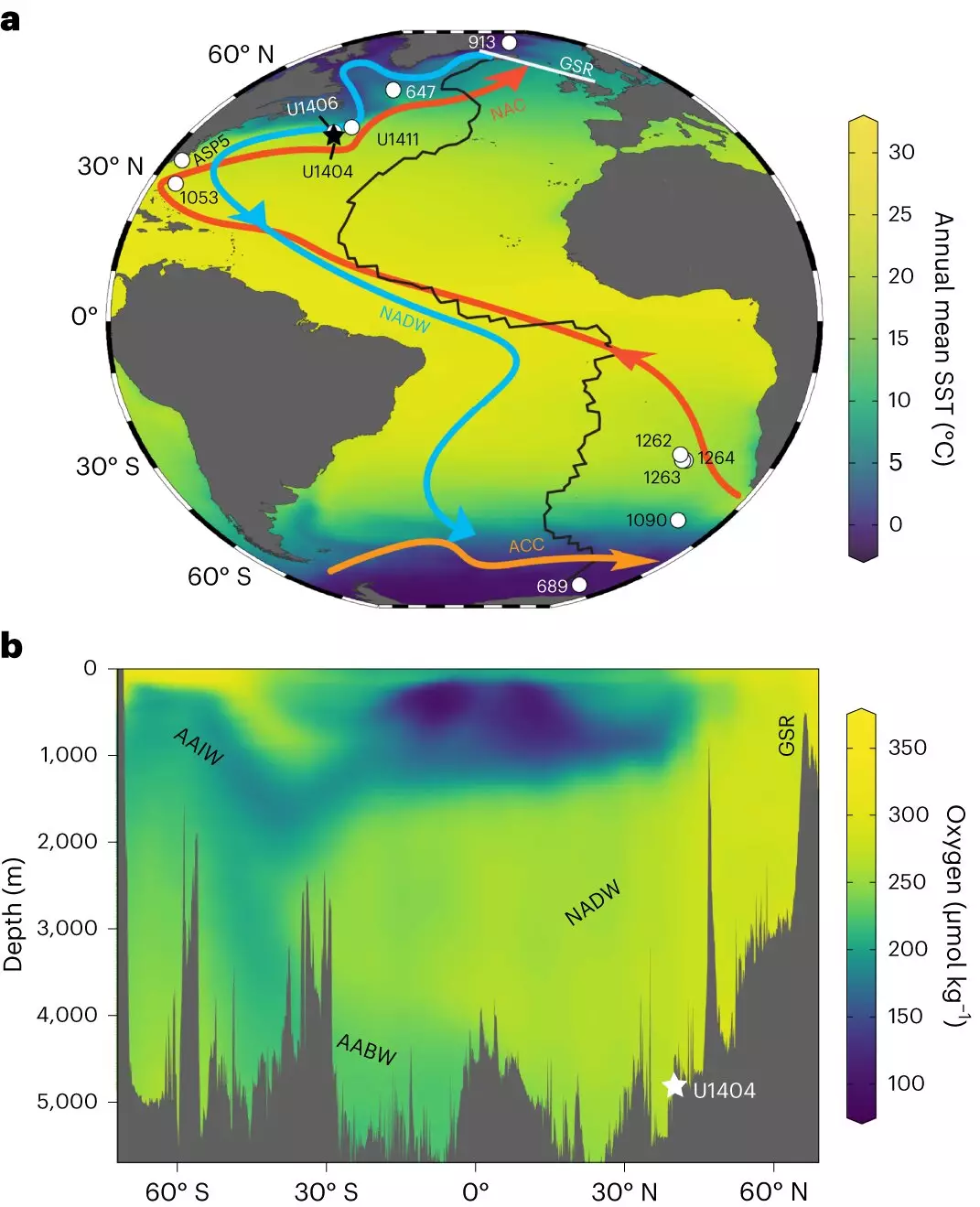When it comes to understanding the Atlantic Meridional Overturning Circulation (AMOC), there has been ongoing uncertainty regarding its timing and cause of inception. The AMOC, a vital component in global climate and marine ecosystems, plays a crucial role in redistributing oceanic heat and salt, interacting with the atmosphere, and ventilating the ocean interior. However, a team of researchers from the Institute of Earth Environment of the Chinese Academy of Sciences (IEECAS), the University of Hong Kong, and the University of Southampton have recently made significant strides in shedding light on this complex system.
In a groundbreaking study published in Nature Geoscience on October 16th, the researchers propose a novel method for tracing oxygenation using microbial biomarkers. By examining microbial source indicators based on the distributions of glycerol dialkyl glycerol tetraethers (GDGTs), the researchers were able to evaluate the oxygenation status of past oceanic environments. These indicators allow for the assessment of the relative contribution of non-Thaumarchaeota archaea/bacteria, which thrive in anoxic environments. One of the study’s authors, Wang Huanye from IEECAS, explains, “The relative abundance of non-Thaumarchaeota, particularly methanogenic and/or methanotrophic archaea, in geological samples offers a method to evaluate the oxygenation status of past oceanic environments.”
Utilizing the microbial source indicators, the research team was able to infer the evolution of early AMOC. Their findings revealed that oxygenation of AMOC-feed waters decreased towards the end of the Eocene period, culminating in poor ventilation. However, a significant shift occurred around 34 million years ago (Ma) during the Eocene-Oligocene transition (EOT) when large-scale Antarctic glaciation began. It was at this point, termed the onset of the EOT, that AMOC-feed waters started to become better oxygenated, leading to consistently well-ventilated waters from around 30 Ma onwards. This marked the beginning of a more modern-like AMOC.
Paleoceanographer Liu Zhonghui from IEECAS, the corresponding author of the study, explains, “The onset of modern-like AMOC is probably triggered by Antarctic glaciation.” This discovery not only provides insight into the timing and cause of the inception of Cenozoic AMOC but also suggests that both vertical mixing and Southern Ocean wind-driven upwelling are essential for sustaining a modern AMOC. The study’s implications highlight the intricate relationship between Antarctic glaciation and the evolution of this critical climate system.
As the researchers continue to delve into the complexities of the AMOC, further understanding of its mechanisms and evolution is crucial. The findings from this study represent a significant step forward in unraveling the mysteries of this system. With a newfound understanding of the timing and cause of AMOC inception, scientists can develop more accurate climate models and improve predictions concerning the impacts of climate change on global climate patterns and marine ecosystems.
The groundbreaking research conducted by the team from IEECAS, the University of Hong Kong, and the University of Southampton has shed new light on the evolution of the AMOC. By employing a novel method for tracing oxygenation through microbial biomarkers, the researchers have unveiled the crucial role of Antarctic glaciation in triggering the onset of a modern-like AMOC. This breakthrough not only enhances our understanding of the AMOC but also provides valuable insights into the mechanisms driving this vital global climate system.


Leave a Reply